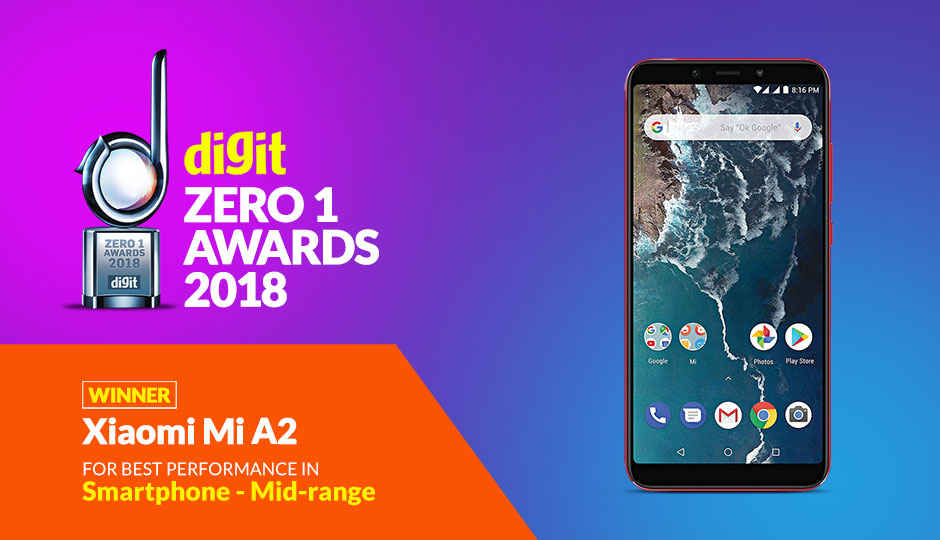Digit Zero1 Awards 2018: Best mid-range smartphone

The trick to choose the best mid-range phone came down to figuring out who is offering the fastest performance as well as features to make use of that. Here are our results.
The mid-range segment once again emerged as the most popular category that saw the most number of phones launching this year. This year, the mid-range phones also pushed the boundaries of pure performance. While we saw phones stride into high-end territory with 6GB RAM and 128GB storage, OEMs attempted to stand out with software trickery. AI and ML were two running themes throughout the year and everything from the camera, battery, and performance were given the AI treatment.
While that did not necessarily guarantee better performance, new, more powerful chipsets pushed the performance benchmark higher. Things like dual cameras and notched displays became more common and glass was the material of choice for the design. In the mid-range segment, it’s all about who is compromising the least to keep the costs in check.
The trick to choose the best mid-range phone came down to figuring out who is offering the fastest performance as well as features to make use of that. Here are our results.
2018 Zero1 Winner
Xiaomi Mi A2 (review)
Xiaomi’s second-generation Android One smartphone feels refined, comfortable and can take the best photos among its peers. It’s also quite fast and powerful under the hood, 23 percent more than last year’s winner to be precise. It outscored all other mid-range phones in our performance tests, but not by a huge margin though. Since the phone’s software is handled by Google, updates are more or less guaranteed for the next two years. The display on the Mi A2 is also visibly better than most other mid-rangers we tested. The phone’s raison d'être is the rear camera that can produce the best images among other mid-range phones. It relies on pixel binning to improve photos, something that only expensive flagships have relied upon so far. More than that, it’s the stock Android experience that makes the Mi A2 go a long way in offering smooth, all-round performance with next to no hiccups. It’s only achilles heel is the not-so-impressive battery life. We recorded a screen-on time of just 5 hours though, but with fast charging on offer, that didn’t become much of a hassle.
Runners up
Honor 8X (review)
The EMUI interface is not the best-looking UI out there, but the Honor 8X more than makes up for it with raw performance that is just one percent less than the Xiaomi Mi A2. The Honor 8X also outperformed most other mid-range phones launched this year on benchmarks, save for the graphics tests. But there too, the Honor 8X compensates with AI-powered GPU acceleration that makes select popular games run much smoother. Even in real-world usage, the Honor 8X is reliable and fast with no noticeable lag. The Kirin 710’s AI capabilities are used primarily in the camera that isn’t all that reliable, but given good lighting, it can take decently good photos. Save for the aggressive RAM management and an inconsistent camera, this year’s runners-up in the mid-range segment offers reliable performance without burning a hole in your pocket.
Best Buy
Asus Zenfone Max Pro M1 (review)
The Asus Zenfone Max Pro M1 offers everything that the Xiaomi Redmi Note 5 Pro offers, but at a lesser price. It’s value proposition, as a result is much higher and even on our performance tests, the Zenfone Max Pro M1 came out higher than Xiaomi’s popular Redmi Note 5 Pro. That’s primarily because of the giant 5,000mAh battery that gave a screen-on time of ten hours which is trumped only by the Nokia 7 Plus which is more expensive. The 16+5MP dual rear camera is a tad underwhelming in front of other, more capable smartphones and the design isn’t the most noticeable.The phone has been an underdog in the smartphone market but well-optimised performance combined with a stock Android interface and a humongous 5,000mAh battery makes Asus’ mid-ranger an easy one to recommend.




